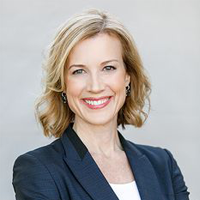
How to Build a Financial Future for Your Children?
Providing the best possible opportunities for your children becomes the top priority as soon as he or she comes into the world. Parents often indulge in health, fitness, lifestyle, and education of their children.
However, during harsh times they face significant issues from managing household money and need to switch to cheap loans instant decision. The expenses for their children also get covered through them for the time being.
But the best options to manage kids finances would include a regular savings account, junior ISA, bonds, and pension. Using these financial solutions would help to build a solid foundation from the day they come into the world.
Ways to Build a Financial Foundation for Your Child
● Bank Savings Account
The easiest method to build a financial future for your child would include opening a savers account with high street banks. Parents can compare the best interest rates on numerous websites.
Optionally, guardians can also choose easy access savings account if they require withdrawal flexibility. However, a regular savings account would provide a much higher interest rate. Parents can also withdraw from a standard savings account but would need to pay the penalty.
Moreover, a regular savings account can provide upto four per cent interest rate as it involves long-term savings. Unfortunately, this account becomes taxable if the child receives more than £100 in interest rate by the end of the year.
But the interest isn’t chargeable if it is higher than the parent’s Personal Savings Allowance. In addition to this, there is no limit to investment from aunts, uncles, friends, and other relatives on this account.
● Junior ISA
Junior ISA is a tax-free prudent saving option for children. Between 2018-19, the overall account limit was £4,128. Moreover, there are two categories of Junior ISA, namely, stock and cash. The former option provides tax-free saving.
On the other hand, the dividends received on investing in a Junior ISA stocks and shares also remain tax-free. Moreover, parents remain accountable for children until they become 16. Besides this, children can withdraw money once they become 18-years-old.
But before making a financial decision about a child’s ISA, it is better to take advice for and against high-risk funds/companies. Guardians can even transfer money from a child’s trust fund to a Junior ISA for opening the latter with financial institutions and banks.
● Bonds for Children
Another safest way of creating a financial future for children besides a fixed rate savings account is a risk-free bond. But just like any other financing option, bonds come with two sides.
On the one hand, the child’s risk-free bond keeps receiving a fixed interest rate for the invested time, i.e., often between one to five years. Meanwhile, the downside of investing in bonds includes no withdrawals.
Some bonds provide a two per cent fixed annual interest rate that remains tax-free. Unfortunately, it is also the considerable downside to bond investment for children. The two per cent inflation rate continues for the entire period, even though it fluctuates in the market.
But parent’s shouldn’t forget that their child’s bond account is accruing two per cent, which is much better than zero per cent. On the bright side, the account opening is possible within a limit of £25 to £3000.
● Starting a Pension Plan
The best way of securing a financial future is by starting a pension plan. These go well eve for kids with at least five years of age. Investing a minimum of £50 monthly would result in £88,000 by 67. It is a much better option than saving from 18.
A Junior Sipp is also a good option for your children. The investor receives twenty-five per cent from the government as the interest rate for every kid. Therefore, an amount of £2,880 converts to £3,600 by the end of the year.
Moreover, a child can receive control of the Junior Sipp after becoming 18-years-old. He/she receives total control of the account. Therefore, the adult can start covering up the investment expenses on their own. Besides this, the person can withdraw the pension sum after becoming 55-years-old.
Conclusively, parents can save money for their children with regular savings accounts, Junior ISA, child bonds, and a pension plan. Unfortunately, if guardians struggle to manage their monetary expenses, it becomes more challenging to manage a child’s financial future.
Therefore, parents struggling with their personal expenses should opt for loans lenders only to cover-up immediate bills, fees, and costs. It would help them to afloat from their crisis and avoid becoming dependent on anyone.
Cost management is possible by switching subscription, removing unrequired expenses, lowering holiday costs, paying off debts, building new income sources, etc. After that, guardians can choose the most viable investment option for their kids.

Ailsa Adam is the Editor-in-Chief and former content head at Hugeloanlender. She has been a valuable member of the content strategy team since 2017 due to her abundant experience in the finance sector. Passionate about helping individuals navigate the world of loans and personal finance, she has dedicated herself to acquiring extensive knowledge on various financial products. Before her role at Hugeloanlender,
Ailsa worked as a seasoned journalist and writer, specialising in creating informative blogs and articles on diverse loan types. She is known for her meticulous research and commitment to delivering accurate and engaging content. She holds a degree in MBA Finance and has a keen interest in creative writing and art.














